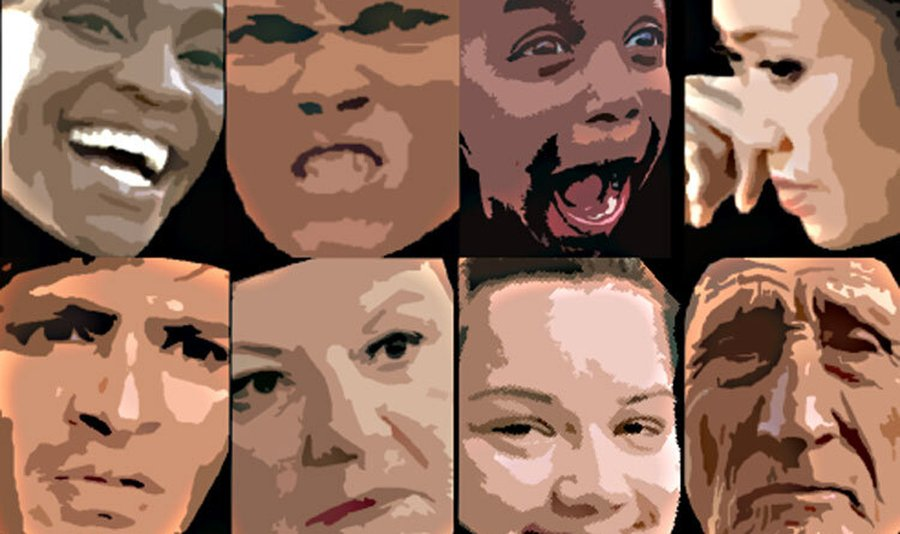16 expressions of the face in emotional situations

Scientists have shown that all human beings use different forms of the same facial expression in similar social contexts, which supports Charles Darwin's theory of expressing feelings as universal.
The new landmark research conducted by the University of California affirms the universality of human emotional expression across geographic and cultural boundaries. Professor Dacher Keltner, a psychologist at the University of California at Berkeley and co-author of the study, said: "This study reveals how remarkably similar people are in different corners of the world in how they express emotions in the face of the most important contexts in our lives."
And researchers at the University of California, Berkeley, and Google have used a machine learning artificial intelligence (AI) technique known as a "deep neural network".
This made it possible to analyze facial expressions in nearly 6 million videos, uploaded to YouTube from 144 countries.
Dr. Alan Quinn, a researcher at both the University of California at Berkeley and Google, who helped develop the AI algorithm, said: “This is the first global analysis of how facial expressions are used in everyday life, and it shows us that universal human emotional expressions are so many. Richer and more complex. Than many scholars previously assumed. "
Dr Coyne created an interactive map to illustrate how the algorithm tracks differences in facial expressions typically associated with 16 emotions.
Applications of advanced artificial intelligence technology include helping people with difficulty reading emotions, such as children and people with autism, to recognize faces that humans usually make to express certain emotions.
A typical human face contains 43 different muscles, which can be activated to create thousands of different expressions.
Dr. Quinn's machine learning algorithm was used for the first time to track facial expressions displayed in six million videos. These ranged from bystanders to fireworks and dancing or comforting a disturbed child.
They used the algorithm to trace examples of 16 facial expressions commonly associated with the following emotions: amusement, anger, terror, focus, confusion, contempt, contentment, desire, disappointment, suspicion, elation, interest, pain, sadness, surprise, and victory.
Then, they reviewed facial expressions with contexts and scenarios conducted across different regions of the world.
This led to the discovery of incredible similarities in how people across geographic and cultural boundaries use facial expressions in different social contexts.
"We found that the nuances of facial behavior - including the subtle expressions we associate with awe, pain, triumph and 13 other emotions - are used in similar social situations around the world," said Dr. Quinn.
The YouTube footage revealed that people all over the world tend to stare in a certain awe during fireworks displays, display satisfaction at weddings, and clench their eyebrows in focus when performing martial arts.
They also demonstrate their suspicion of protests, pain upon training, and triumph by attending parties and football matches.
The results revealed that people from different cultures share approximately 70% of the facial expressions used in response to different social and emotional situations.
Professor Keltner said: "This supports Darwin's theory that the expression of emotions in our faces is a universal matter among humans. The physical presentation of our feelings may define who we are as a species, enhance our communication and cooperation skills and ensure our survival."



